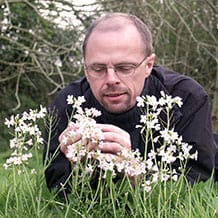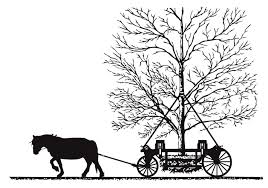I’m trying to catch up on New Scientists and serendipitously ran across this interview with ecologist Chris Thomas by Fred Pearce. I think it’s an interesting thought-piece because I think it tries to distinguish scientific facts from normative ideas that have crept in to “scientific” discourse, and even legislation. An ESA with these ideas might be designed differently, IMHO. Also it’s interesting he says that we know more about extinctions than new species..of course, what we know about is what we pay scientists to study. So when we say “science says” there are many social forces influencing that, within and without the science biz.
Also, it is interesting to think about these ideas and the spotted and barred owls.. interesting juxtaposition with what Bob just posted about the NW Forest Plan.
A decade ago, ecologist Chris Thomas warned that climate change would wipe out a quarter of all species. Now he tells Fred Pearce that we might actually end up with more species than before – and this isn’t a contradiction
Are you no longer concerned about extinctions?
We worry about extinction of species in the era of humans. But at the same time we are seeing an evolutionary surge. The seeds of recovery are already visible. New species are beginning to emerge. Of course many will fail, but others will become the lineages of the future.
This seems light years away from your forecast in 2004 that a global temperature rise of 2 °C would commit millions of species to extinction. Surely you cannot hold both views?
Actually, yes. I’m not arguing that extinctions won’t happen as humans mess up habitats, move species round the globe and change the climate. As I said 10 years ago, climate change will probably cause a mass extinction. I wish this wasn’t so. But I am saying that this is only one side of the coin. These processes also provide ecological opportunities – for species that already exist, and for new forms of life to evolve to exploit the changed environments.
How do we know that there will be opportunities for new life?
People say we are in the throes of the sixth great extinction – as big as when an asteroid killed off the dinosaurs 65 million years ago. The jury is still out on that. It might take human numbers in the billions for a thousand years to do that much damage. But all past extinctions were followed by a burst of evolution. Disappearing dinosaurs created space for mammals to evolve. So why not this time? The flip side of a new great extinction would eventually be a new evolutionary explosion. A new genesis, if you like.
Is this increase in diversity happening already?
Yes. Genes are jumping around. Molecular genetics is finding that hybridisation between species is more common than previously suspected. Darwin talked about a tree of life, with species branching out and separating. But we are discovering it is more of a network, with genes moving between close branches as related species interbreed. This hybridisation quickly opens up evolutionary opportunities.
How do the alien species we introduce change different habitats?
Non-native species are a big part of this revolution. Most conservationists fear these invaders taken round the world by humans – sometimes with good reason. Kudzu vines, zebra mussels and cane toads, not to mention rats and rabbits, can displace native species and transform established ecosystems.
But often when alien species come into contact with related native species, hybrids result. And you get evolutionary divergence, too. After a species has been moved from one place to another, it may start to evolve into a novel species. Native species also evolve under the influence of aliens.
Are there examples of these types of changes?
In Britain, hybridisation involving introduced plant species seems to be happening at least as fast as native species are going extinct. For instance, European rhododendrons have hybridised with cousins from North America to generate a thriving wild population. As for changes in native species – insects change to live off new plants. For instance, a hybrid of two species of fruit fly in North America has evolved to colonise invasive honeysuckles.
What about fears that hybridisation changes and weakens native species genetically?
There are examples when native species can be genetically swamped by a more numerous invader. But new genes from alien species usually only invade the genome of an existing species if they confer some advantage. They often help them thrive.
So what should conservation involve, then?
It could help species take advantage of new opportunities. In a time of climate change, it is silly to try to prevent species moving, for example. We should be making it easier for them. Some people want to create migration corridors, so that whole ecosystems can move. Here in York we have gone one step further. We have been experimenting with taking butterflies north and releasing them. It works.
What about the charge that you are messing with natural ecosystems?
Nothing is entirely natural any longer. And ecosystems don’t have some preordained cast list. We know that at the end of the last ice age, the last time we had big climate change, tree species migrated north as the ice retreated, reclaiming old territory. But they didn’t go back at the same speed, or to the same places. Different combinations of species emerged. It will be like that again. The world is already full of ecosystems that have never existed before. They work just fine.
Does all of this mean that we should learn to love alien species?
Alien species can alter local ecosystems and be very inconvenient for humans. But only a few dozen of the many thousands of species we have transported around the world have actually driven another species extinct. Most don’t. In most countries, they increase biodiversity.
Plant diversity has increased by about a fifth in the continental US states as a result of new arrivals. Britain has more than 1800 non-native species, but as far as I know they have caused no extinctions.
So should we just let nature take its course?
Not entirely. Personally, I think we should do everything we can to minimise habitat loss and climate change. But not every change can or should be resisted. We shouldn’t confuse change with damage, or think of alien species as bad and natives as good. Some aliens are definitely a nuisance from a human perspective, but so are some native species. We are a part of the global system.
Part of the problem is that things are happening so fast that we see big ecological transformations in our individual lifetimes. It is human nature to be worried about that. I sometimes pull up alien weeds that I see in the fields around where I live. But that is an emotional response. Intellectually, I see nothing wrong with most of them.
Won’t extinctions always outpace evolution?
For the time being, but not always. If nature can bounce back from an asteroid hit, it can probably bounce back from us.
Why aren’t scientists talking more about all this good news?
We are always quantifying extinction, but we still know very little about the reverse process. It is only recently we have come to realise quite how much evolutionary change is going on. It is starting to look very much like a global acceleration of evolutionary rates.
Some scientists worry that, if we start working on this, it suggests we don’t care about extinction. That doesn’t follow. I think we should see this evolutionary novelty as an exciting research priority.
So, ultimately, most of this change is good?
Good and bad is irrelevant. It is wrong to believe we have a duty to resist all change in nature. Nature is always changing. Species are going to have to move to survive. New species and ecosystems will be created along the way. Dynamic alien colonists, and the evolution they kick-start, will be a part of the mix.
A narrow preservationist agenda will reduce the capacity of nature to respond to the environmental changes that we are inflicting on the world. We need to think less about keeping things just the way they were – not least because it’s impossible and virtually nowhere is pristine any more – and more about promoting the new.



